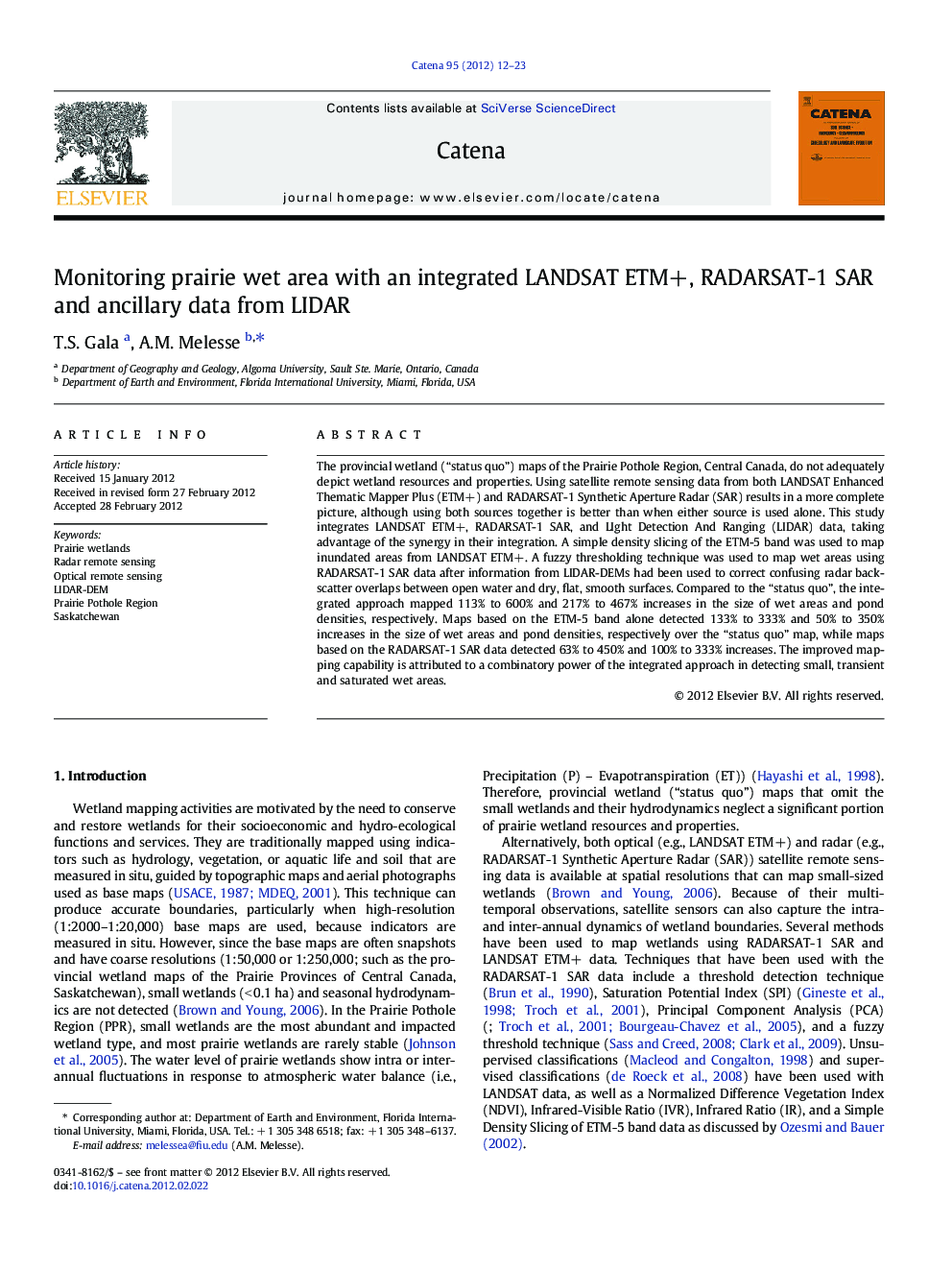| کد مقاله | کد نشریه | سال انتشار | مقاله انگلیسی | نسخه تمام متن |
|---|---|---|---|---|
| 4571816 | 1629257 | 2012 | 12 صفحه PDF | دانلود رایگان |

The provincial wetland (“status quo”) maps of the Prairie Pothole Region, Central Canada, do not adequately depict wetland resources and properties. Using satellite remote sensing data from both LANDSAT Enhanced Thematic Mapper Plus (ETM+) and RADARSAT-1 Synthetic Aperture Radar (SAR) results in a more complete picture, although using both sources together is better than when either source is used alone. This study integrates LANDSAT ETM+, RADARSAT-1 SAR, and LIght Detection And Ranging (LIDAR) data, taking advantage of the synergy in their integration. A simple density slicing of the ETM-5 band was used to map inundated areas from LANDSAT ETM+. A fuzzy thresholding technique was used to map wet areas using RADARSAT-1 SAR data after information from LIDAR-DEMs had been used to correct confusing radar backscatter overlaps between open water and dry, flat, smooth surfaces. Compared to the “status quo”, the integrated approach mapped 113% to 600% and 217% to 467% increases in the size of wet areas and pond densities, respectively. Maps based on the ETM-5 band alone detected 133% to 333% and 50% to 350% increases in the size of wet areas and pond densities, respectively over the “status quo” map, while maps based on the RADARSAT-1 SAR data detected 63% to 450% and 100% to 333% increases. The improved mapping capability is attributed to a combinatory power of the integrated approach in detecting small, transient and saturated wet areas.
► This study integrates LANDSAT ETM+, RADARSAT-1 SAR, and LIDAR data for prairie mapping.
► A fuzzy thresholding technique was used to map wet areas using RADARSAT−1 SAR data.
► LIDAR was used to correct radar backscatter overlaps between open water and dry, flat surfaces.
► The integrated approach increases in the size of wet areas and pond densities.
Journal: CATENA - Volume 95, August 2012, Pages 12–23